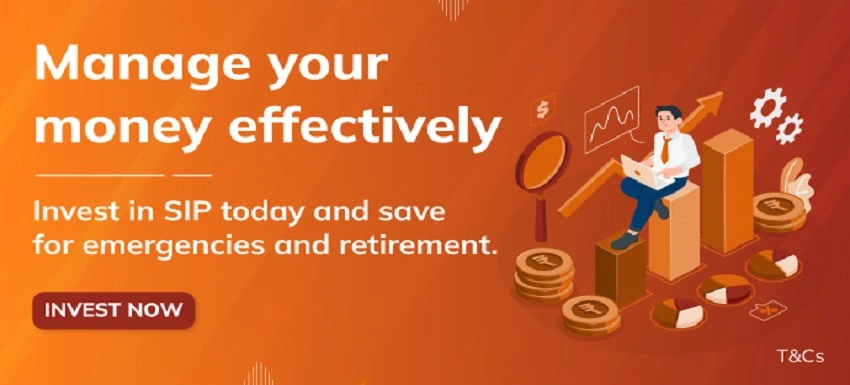THE
ORANGE
HUB
What Is NIFTY Midcap 150? How Can You Invest In NIFTY Midcap 150?

For everyone involved in investments, pursuing opportunities for substantial growth remains a common choice. While large cap companies provide stability, mid cap companies often present a unique proposition by offering a greater growth potential. The NIFTY Midcap 150 index, comprising of 150 selected mid cap companies ranked 101-250 based on market capitalisation stands out for investors seeking exposure to this dynamic segment.
Understanding NIFTY Midcap 150
NIFTY Midcap 150 is a group of 150 mid sized companies in India, ranked 101-250 based on their size. It shows how these companies perform in the stock market. Investing in NIFTY Midcap 150 lets you be a part of their growth, potentially offering excellent returns over time.
The NIFTY Midcap 150 index draws its components from the broader NIFTY 500 Index, targeting companies ranked 101-250 based on market capitalisation. A company's market capitalisation is a key metric calculated by multiplying its stock price by the total number of outstanding shares including both actively traded shares and those held by promoters or the government.
The NIFTY Midcap 150 index structure ensures a diverse representation of mid sized companies across various sectors, contributing to an all inclusive market view. It consists of companies assured of growth and expansion, making it an attractive investment avenue.
Weightage of different companies and sector distribution in NIFTY Midcap 150
Within NIFTY Midcap 150 index, the weightage assigned to each company is determined by its free float market capitalisation which considers only the portion of shares available for trading in the open market. Consequently, companies with higher free float market cap hold a more significant weightage in the index.
This dynamic weightage system ensures that the NIFTY Midcap 150 index provides a balanced representation of sectors, preventing over reliance on a specific industry. This diversification contributes to the resilience of the index in the face of market fluctuations.
Name of Company |
Weightage (%) |
Max Healthcare Institute Ltd. |
1.85 |
Power Finance Corporation Ltd. |
1.61 |
Indian Hotels Co. Ltd. |
1.60 |
REC Ltd. |
1.57 |
Federal Bank Ltd. |
1.53 |
AU Small Finance Bank Ltd. |
1.51 |
Tube Investments of India Ltd. |
1.38 |
Coforge Ltd. |
1.37 |
Yes Bank Ltd. |
1.33 |
Here’s an overview of sector wise weightage:
Sector |
Weightage (%) |
Financial Services |
21.74 |
Capital Goods |
14.33 |
Healthcare |
10.78 |
Automobile and Auto Components |
7.52 |
Information Technology |
6.45 |
Chemicals |
5.95 |
Consumer Durables |
4.79 |
Consumer Services |
4.46 |
Realty |
3.34 |
Note: The weightage of 150 companies in the index keeps changing as a company’s free float market cap ultimately depends on its stock price that changes everyday.
What are the returns of NIFTY Midcap 150 Index over the years?
Below are the returns of NIFTY Midcap 150 as of October 2023:
Investment Period |
Price Returns (%) |
Total Returns (%) |
1 Year |
22.07 |
22.78 |
3 Years |
30.25 |
31.33 |
5 Years |
20.00 |
21.03 |
10 Years |
19.84 |
21.02 |
Since launch |
15.82 |
17.25 |
Key benefits of NIFTY Midcap 150 funds
Long term growth
The mid cap segment is known for its market volatility, offering both challenges and opportunities for investors. Despite short term fluctuations, the NIFTY Midcap 150 has demonstrated robust long term performance, showcasing an average annual return of 16.5% over the last 15 years. This impressive track record highlights the growth potential in mid sized companies.
Illustrative returns
To provide a realistic perspective on the wealth building potential, consider the scenario of investing Rs 10,000 monthly in the NIFTY Midcap 150 for 15 years. Such investment approach could result in an accumulation of over Rs 78 lakh by March 2024. These illustrative returns are identified as wealth creation opportunities with a strategic and disciplined investment approach in mid cap indices.
Strategies for Investing in NIFTY Midcap 150
Traditional approaches
Investors often opt for direct investment in the NIFTY Midcap 150 through index funds or Exchange Traded Funds (ETFs) specifically designed to track this index. While this approach provides a straightforward entry into the mid cap segment, it has limitations. Profits and losses are tied to the performance of the NIFTY Midcap 150 index, offering limited potential for outperformance.
Genius strategy
For those seeking to surpass index like returns, an ET Money Genius membership introduces a more sophisticated approach. Genius strategies offer exposure to portfolios investing in NIFTY Midcap 150 index funds and provide diversification across various other indices and asset classes.
Dynamic asset allocation
One distinctive feature of the Genius approach lies in its dynamic asset allocation strategy. Tailored to individual investment personalities, this strategy adjusts the allocation of assets based on market conditions. The result is an investment approach that captures the market upside while providing substantial downside protection during market corrections.
What makes Mid cap funds better than Large cap funds?
Mid cap funds offer distinct advantages over large cap funds for various reasons:
Diverse sector exposure: Mid cap funds generally offer a more diversified sector exposure than large cap funds. This diversification helps reduce risk by minimising the impact of underperformance in any specific sector.
Emphasis on domestic growth: Mid cap funds often prioritise sectors that focus on domestic growth. This strategic positioning allows investors to capitalise on India's growing economy without excessive dependence on global market trends.
Conclusion
Investing in the NIFTY Midcap 150 index unveils the growth potential of 150 mid sized companies each with the capacity to emerge as a leader in its sector. Striking a balance between convenience, simplicity and cost effectiveness, index funds and ETFs offer a straightforward entry into the dynamic mid cap segment. Whether opting for a Direct investment approach or a Genius strategy, the key lies in aligning investments with growth path of Mid cap companies.
As investors embark on this journey, it is important to recognise the potential for wealth creation and positive market returns in a well informed and disciplined investment strategy.
The NIFTY Midcap 150 index serves as a canvas for investors to paint a picture of growth and by making informed choices, investors can navigate the complex investment landscape with confidence.
Scroll to top











